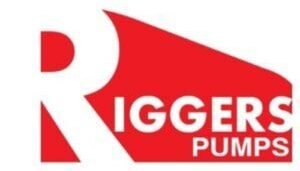Understanding Investment Casting
Investment casting, or lost-wax casting, is a precision manufacturing process used to produce highly detailed and complex metal parts. The technique involves creating a wax replica of the component, coating it with a ceramic shell, and then removing the wax to form a mold. Once molten metal is poured in and solidified, the ceramic shell is broken away, revealing the final metal casting.
However, post-casting cleaning is crucial to ensure that the final product meets quality and performance standards. The removal of ceramic shell residues, oxides, and impurities is an essential step to prepare the casting for further processing. High-pressure pumps play a significant role in this cleaning process, offering a precise, non-abrasive, and efficient solution to remove contaminants while preserving intricate details.
The Role of High-Pressure Pumps in Investment Casting Cleaning
High-pressure pumps play a vital role in the cleaning of investment castings, offering a non-abrasive and efficient method to clean delicate, complex metal parts. Here’s how the process works and why it is important:
1. Effective Removal of Ceramic Shell Residues:
During investment casting, the metal component is encased in a hardened ceramic shell. This shell must be thoroughly removed to expose the final casting without damaging its fine details. High-pressure water jets (ranging from 3,000 psi to 20,000 psi) are used to break down and wash away the ceramic shell. This method is particularly beneficial for:
- Complex geometries and delicate features, where mechanical or abrasive methods may cause damage.
- Ensuring uniform cleaning, even in intricate or hard-to-reach areas.
2. Non-Abrasive Surface Cleaning:
Unlike mechanical cleaning methods, which may scratch or deform the surface, high-pressure water jetting removes impurities without altering the dimensional integrity of the part. This is critical for applications that demand high precision, such as aerospace, automotive, and medical components.
3.Elimination of Scale, Oxides, and Impurities:
During the casting process, scale, slag, and oxides can form on the metal surface, affecting its final quality. High-pressure pumps efficiently remove these unwanted materials, ensuring:
- A clean and smooth finish for improved aesthetics and performance.
- Prevention of corrosion and material degradation, extending the component’s lifespan.
4.Precision Cleaning for Intricate Designs:
Many investment castings have thin walls, internal cavities, and undercuts that traditional cleaning methods struggle to reach. High-pressure pumps, when combined with customized nozzles and multi-angle jet streams, can effectively clean even the most intricate designs, ensuring no residue is left behind.
5. Adjustable Pressure Settings for Versatile Applications:
One of the key advantages of high-pressure pumps is their customizability. Depending on the material and complexity of the casting:
- Lower pressures can be used for delicate components.
- Higher pressures can tackle thicker ceramic shells and stubborn residues.
- This adaptability ensures optimal cleaning without compromising part integrity.
6. Increased Efficiency and Reduced Cleaning Time:
Compared to traditional methods like chiseling or grinding, high-pressure cleaning drastically reduces cleaning time. The efficiency of water jets allows for rapid removal of residues, enabling manufacturers to increase production speed and throughput.
7.Labor and Cost Savings:
Manual cleaning techniques require significant labor, increasing costs and the risk of inconsistencies. High-pressure cleaning:
- Automates the process, reducing reliance on manual labor.
- Minimizes errors that could lead to rework or scrap production.
- Improves workplace safety, eliminating the need for harsh chemicals or abrasive tools.
8.Eco-Friendly Cleaning Solution:
Unlike chemical-based cleaning methods, high-pressure water jetting is environmentally friendly. This method:
- Eliminates the use of toxic chemicals that require special disposal.
- Reduces hazardous waste, making it a sustainable option.
- Uses pure water, ensuring safety for both workers and the environment.
Step-by-Step Process of High-Pressure Cleaning in Investment Casting:
Step 1: Pre-Cleaning Inspection
Before high-pressure cleaning, castings are inspected for structural integrity. Large ceramic fragments may be manually removed to optimize the water jet’s effectiveness.
Step 2: High-Pressure Setup
The component is placed in a designated cleaning area where the high-pressure pump settings and nozzle types are adjusted based on:
- Material type (e.g., aluminum, stainless steel, titanium)
- Casting complexity
- Required pressure levels
Step 3: Water Jet Application
High-pressure water jets are systematically directed at the casting:
- Targeting critical areas where ceramic shell residues or oxides accumulate.
- Ensuring complete cleaning of both external and internal surfaces.
Step 4: Final Inspection & Finishing
After cleaning, the casting undergoes a final quality check to confirm that all debris has been removed. If necessary, additional surface treatments (e.g., polishing, coating, or heat treatment) are applied.
Applications of High-Pressure Cleaning in Investment Casting:
- Aerospace Industry: Investment castings are used to produce precision parts like turbine blades and engine components, which require detailed cleaning without compromising their dimensional accuracy.
- Automotive Industry: Investment castings are often used to create intricate parts such as engine components, transmission housings, and suspension systems. High-pressure cleaning ensures these parts are free of residues and ready for assembly.
- Medical Industry: In the medical field, investment casting is used to create precise surgical tools and implant components. High-pressure cleaning ensures that these parts are thoroughly cleaned and free from contamination.
- Jewelry and Artistic Castings: Investment casting is also widely used in the production of intricate jewelry and art pieces. High-pressure cleaning preserves the fine details of these creations by removing the ceramic shell without damaging the delicate features.

